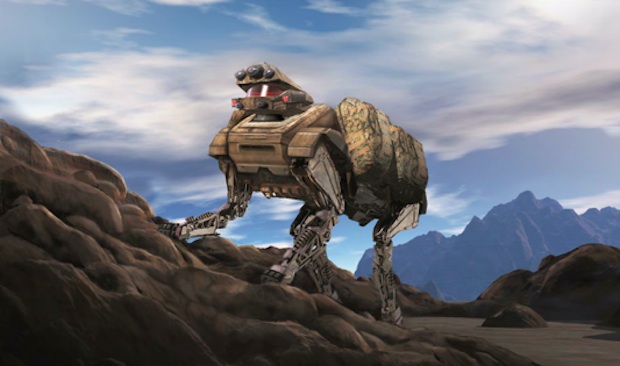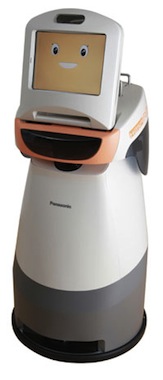
AlphaDog
If Boston Dynamics' BigDog quadruped robot gives you the willies with its amazingly animal-like skills at tromping across difficult land at speed, then don't watch the video of BD's newest iteration of its military assistant robot, AlphaDog.
[youtube SSbZrQp-HOk]
BigDog was really the development prototype for AlphaDog, suffering from an enormously noisy engine and fairly limited operating range and payload powers. AlphaDog, on the other hand, is closer to a production dog droid that could actually accompany troops on the battlefield: It's quieter, can carry 400 pounds and run 20 miles without needing more gas, versus BigDog's 340 pounds and 12-mile range. Properly called the LS3 "Legged Squad Support System," AlphaDog is also smarter at autonomous navigation, can right itself after a slip or fall, and will eventually be able to leap over some obstacles. After more development, AlphaDog will be tested by DARPA and soldiers in realistic outdoor situations.
Rocket Flea Bots
The University of Maryland and the Army Research Lab may be only in the early stages of testing their self-propelled flea-like microrobots, with the "robot" part reduced to being a simple mass as a faked carcass for a later, more sophisticated body, but the results are already impressive. The team is testing two different systems--one that uses tiny micro-engineered silicone rubber springs to drive a piston, and the other which includes a miniature solid fuel rocket engine, ignited by a micro-engineered resistor.
[youtube hrlTwbiZmTE]
Both systems work surprisingly well to propel the tiny devices an impressive number of body lengths in the air--much like a real flea--and the on-board light sensitive trigger for the rocket version is a hint at the further sophistication possible. Ultimately these devices, as you may suspect from their army research pedigree, may find use in battlefield or police situations, acting as spy drones or perhaps investigative imaging devices scattered into a building.
Birds and Roaches
UC Berkeley has sought inspiration in the construction of cockroaches and birds for its series of biomimetic research robots, demonstrating their Octoroach and Bolt machines this week as part of the IEEE International Conference on Intelligent robots.
[youtube 4b5sOru11Mg]
We've seen similar devices before, but it's worth pointing out that these small devices are autonmous to a certain extent, packing navigation, propulsion, power, and sensor packages into their small bodies.
Flocking Swarms
Flying robots are now a cultural norm, in the era of advanced aerial drones used to surveil battlefields--and sometimes to actually fire weapons, but they tend to be lone devices with limited payloads and tightly defined tasks and capabilities. The Laboratory of Intelligence Systems has been trying to develop this notion with research into aerial drones that are intelligent enough to fly in flocks. Their small electric-powered fliers contain propulsion, GPS, and control electronics and a Wi-Fi dongle powered by a specially coded Linux board that lets them communicate with other drones nearby.
[youtube n_qRuHkD5lc]
The devices can take off, form a flock, and then "migrate" as a group thanks to their radio chatter. In the near future devices like this will enable cheap, detailed on-the-fly ground imaging in much more real time than is currently possible and could find uses in mapping, search, and surveillance roles. They also strike us, if equipped with advanced 360-degree cameras, as exactly the sort of smart device Google would embrace for a more speedily updated version of Google Maps.
 Nurse Bot
Nurse Bot
Robots aren't just the stuff of distant dreams, don't forget: Panasonic has just revealed three new nurse robots, designed for the care and assitance of elderly patients. Hospi-Rimo should let people who are stuck in bed or who have limited mobility communicate more easily with friends, family, and doctors through their screens, cameras, microphones, and wireless web connections. One edition of the new machines is actually a robotic bed that can transform into a wheelchair so that patients actually can move around without having to leave their sleeping platform, while another is designed to boost the dignity of an immobilized patient by washing their hair automatically.
Chat about this news with Kit Eaton on Twitter and Fast Company too.